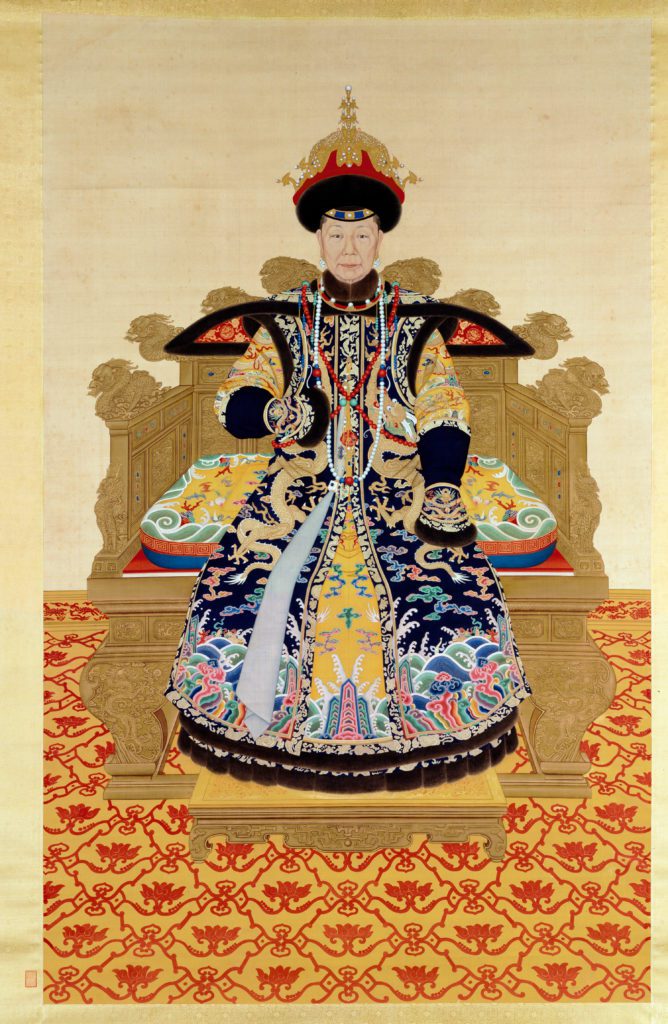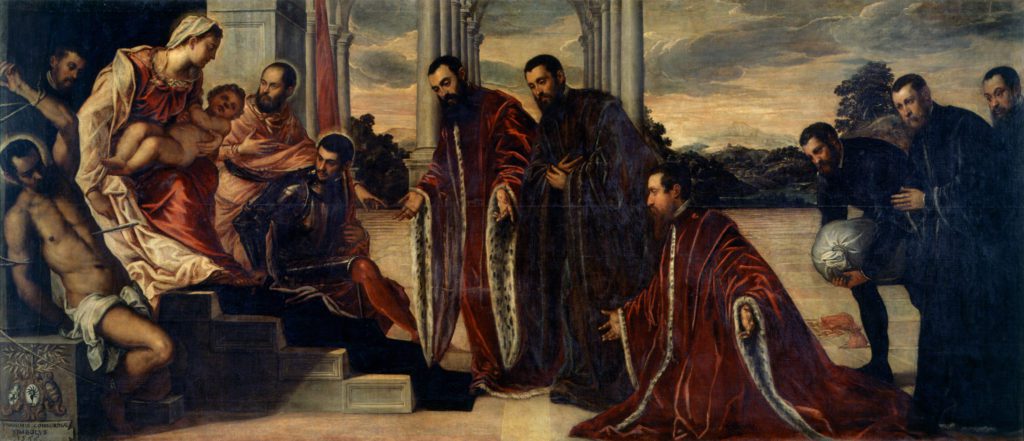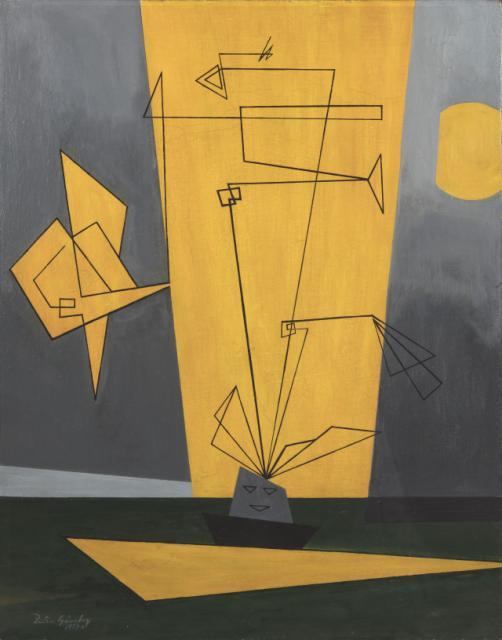Spring Arts Preview: Visual Arts
By • March 7, 2019 0 911

National Geographic Museum
Queens of Egypt
Through Sept. 2
This major exhibition at the National Geographic Museum highlights and celebrates the most powerful women in ancient Egypt — from the first queen of the New Kingdom, in the 16th century B.C., through the final pharaoh of the Ptolemaic dynasty, some 1,500 years later. Visitors will walk among more than 300 ancient Egyptian artifacts, including monumental statues and sarcophagi, embark on a 3D fly-through of one of the most lavishly decorated tombs in the Valley of the Queens and become immersed in the daily life and afterlife of ancient Egyptians.
Freer and Sackler Galleries
Empresses of China’s Forbidden City, 1644–1912
March 30 to June 23
Featuring royal portraits, court paintings, Buddhist sutras and religious objects — along with costumes, jewelry and furniture used in the imperial complex known as the Forbidden City — the vital presence of empresses over the 260-year Qing dynasty will be brought to life for the first time in this in-depth exhibition. Most of the artworks displayed, many never exhibited outside China, are from the Palace Museum in Beijing. The exhibition dispels a common misapprehension that these women were passive figures, merely glamorous or subservient wives. Instead, the empresses frequently traveled, rode horses and performed myriad royal duties, exerting influence in the arts, religion, politics and diplomacy.
National Gallery of Art
Tintoretto 500
March 24 to July 7 (June 9 for prints and drawings)
In celebration of the 500th anniversary of the birth of the Venetian Renaissance master Jacopo Tintoretto (1518-1594), the National Gallery of Art will present three exhibitions that explore the artist’s achievement as a painter and draftsman, as well as influences and innovations of other great printmakers in Venice in the 16th century. “Tintoretto: Artist of Renaissance Venice,” the first Tintoretto retrospective in North America, will feature nearly 50 paintings and more than a dozen works on paper spanning the artist’s entire career. “Drawing in Tintoretto’s Venice” offers new ideas about his artistic evolution, working procedure and workshop practice in approximately 80 of the finest examples from two dozen public and private collections. “Venetian Prints in the Time of Tintoretto” will present some 30 prints, from critical sources for Tintoretto’s artistic formation to striking graphic responses to the expressiveness of his style.

“The Madonna of the Treasurers,” 1567. Jacopo Tintoretto. Gallery dell’Accademia, Venice. Scala/Ministero per i Beni e le Attività culturali/Art Resource, NY.
Kreeger Museum
Charles Hinman: Structures, 1965–2014
April 18 to July 21
New York-based abstract painter Charles Hinman pioneered three-dimensional, shaped canvases starting in the 1960s. Born in 1932, Hinman tirelessly experimented with the relationship between color, abstraction and the picture plane using a wide variety of surfaces, materials and techniques. He is best known for his compositions that emerge from the wall in a collection of hand-built, multicolored planes that expand the conventional space of the canvas. “Structures” is Hinman’s first museum show in the Washington area and the first survey in more than 30 years, bringing together his historic paintings from the 1960s while presenting objects — including cast paper reliefs and other experimental artworks — that shine a new light on his expansive and ongoing studio practice.
Hirshhorn Museum
Enrico David: Gradations of Slow Release
April 16 to Sept. 2
Born in 1966, Italian artist Enrico David, now based in London, employs a variety of media — sculpture, painting, installation and works on paper — to develop a dynamic and unique vision of the human form, both physical and psychological. Often fragile, vulnerable, grotesque and mutable, David’s imagery achieves a universal expression of the human experience, albeit through a deeply personal formulation. His work represents the way ideas and characterizations of being can morph and evolve over time, including notions of interiority, multiplicity and disembodiment. In addition, they reflect the circular process inherent to his craft, where the human form is shaped and reshaped and continuously made anew.
National Building Museum
Hoops
March 9 to Jan. 5
“Hoops” presents large-format images of outdoor basketball courts and hoops, public and private, that have captured the attention of photographer Bill Bamberger. Devoid of people, the images are nonetheless remarkable portraits of neighborhoods and communities. Bamberger has a keen eye for elevating the everyday, often in overlooked, forgotten or neglected places. The photographs on view were taken across the U.S. and in more than half a dozen countries, from the deserts of Arizona and Mexico to the hills of Appalachia, from the streets of the Northeast to the playgrounds of South Africa. Collectively, the images of hoops and courts — tacked to the side of a barn, subject to saltwater breezes, surrounded by brick walls and chain-link fencing — celebrate the sport and reveal its enduring global appeal.
Phillips Collection
Zilia Sánchez: Soy Isla (I Am an Island)
Through May 19
The Phillips Collection presents the first museum retrospective of nonagenarian Havana-born artist Zilia Sánchez, featuring more than 60 works including paintings, works on paper, shaped canvases and sculptural pieces, alongside illustrations, design sketches and ephemera. The exhibition traces Sánchez’s artistic journey from her early days in Cuba, through her extended visits to Europe and residence in New York, to her move to Puerto Rico. Many of Sánchez’s works reference protagonists from ancient mythology — warriors and female heroines. Others have reoccurring motifs of lunar shapes, erotic topologies and tattoo drawings that map physical and psychological spaces. The exhibition title serves as a personal metaphor for Sanchez’s experience as an islander, connected to and disconnected from both the mainland and mainstream art currents.

“Afrocubano,” 1957. Zilia Sánchez. Courtesy Phillips Collection.
National Museum of Women in the Arts
Ursula von Rydingsvard: The Contour of Feeling
March 22 to July 28
“The Contour of Feeling, organized by Philadelphia’s Fabric Workshop and Museum, is the first solo exhibition in Washington, D.C., for Ursula von Rydingsvard, who was born in Germany in 1942. Her monumental wood sculptures evoke the grandeur and power of nature, simultaneously bearing evidence of the artist’s meticulous process of cutting, shaping and assembling thousands of cedar blocks. Focusing on von Rydingsvard’s artistic development since 2000 and her continued commitment to experimentation, the presentation includes many sculptures not previously exhibited in the United States. Made from wood or other organic materials, such as leather, silk and hair, these works present a window into the emotional fragility and imposing scale that define her art.

